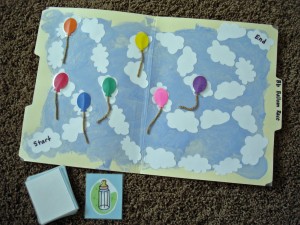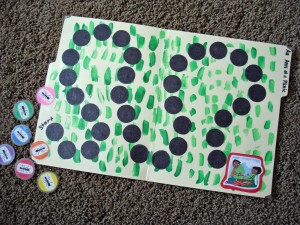Learning to write is a thrilling adventure for your child. It’s also key to building her reading skills. Like grown-ups, children use writing to communicate to others. You’ve probably noticed your child pretending to write notes, make lists, and take phone messages to embellish her dramatic play. These early activities provide powerful motivation to learn more. When children pretend to write, it indicates that they are beginning to understand the functions of print and to recognize both reading and writing as activities worth learning.
Based on recent research findings, we have identified five keys to writing in early childhood. These keys will clue you into the learning process:
Children´s writing attempts begin early, around 2 years of age. Even the earliest attempts at writing help children develop reading skills. Beginning writers learn to master the functions and purposes of writing; for example, making lists to remember what to buy at the grocery store. Beginning writers learn the forms and features of written language (first names begin with a capital letter, for instance). Children learn the processes of writing (using writing to communicate) early. Writing and reading are related and depend on each other. When your child writes you a note, for example, she clearly has a sense of the audience: She expects you to read her message. But reading and writing are not simply two sides of the same coin. Especially for young children, writing is a more active pursuit than reading is. Early writing attempts are often efforts to communicate with others by making visible markings on paper. In these early experiments, your child realizes that she can use writing to make requests, to identify objects, and to express their feelings.
On the other hand, reading is a more internal process, which she is trying to understand and participate in. As your child’s awareness of print develops, and she recognizes that the squiggles on paper are similar to the print in books, the two activities of reading and writing begin to connect.
You can help your child with this connection by writing and illustrating a story of a trip that you’ve recently taken. Encourage your child to write, and then record what she said underneath her writing. You’ll find that she will ask to read this special story again and again. Also, your child might like rewriting her favorite stories in her own words, using pictures to illustrate the actions. She might also enjoy adapting a book — like turning Brown Bear, Brown Bear into Big Hands, Small Hands — using the same cadence in the story, but with new categories and adjectives.
Children learn best in environments that support their earliest writing experiments with various materials, and they need adults to serve as responsive listeners, readers, models, scribes, and friendly editors. Understanding how your child learns about and masters the formal aspects of writing can help you assist her in building writing skills. It’s all about offering thoughtful feedback, encouragement, and positive reinforcement.
Because the course of writing development is not always linear and does not occur in fixed sequences, the learning process is not tied to specific ages and stages. However, by 2 years of age, most children are able to hold a large pencil, and if they are offered paper, they will begin to scribble (the precursor to writing). Girls often show interest in writing before boys. Generally, we assume that girls develop fine-motor coordination, such as the ability to grasp a pencil or crayon, slightly earlier than do boys, who tend to prefer large-motor activities like running and ball playing. Still, research shows that by age 5, boys will be just as capable as girls in developing their writing skills.
The Sounds-to-Letters Connection
Between the ages of 4 and 7, children begin to translate the words they hear and say into the letters that spell them. This is the beginning of the alphabetic principle — understanding the connection between letters and their sounds. Not surprisingly, the first word most children learn to spell is their name, because it is so important to their developing sense of self and feelings of mastery. Learning how to spell his name places your child on the road to learning many different things about print: He will learn about beginning sounds; that a name begins with a capital letter, followed by lowercase letters; and, most importantly, that there is a set order to the letters in his name that never varies.
The names of letters provide important clues for your child’s understanding of the sounds these letters make. But the letters and sounds in the English language do not always correspond. As children try to figure out the relationship between letters and sounds, they will begin to invent their own ways of spelling, often using a “letter-naming” strategy. This means that a child will write the letters he hears — such as l-f-n-t for elephant — often leaving out vowels or hard-to-sound-out consonants. Sometimes one letter may represent an entire syllable.
This letter-naming technique tells us that children are beginning to sound out words as they try to represent more and more speech sounds in their spellings. Children often invest considerable energy in trying to master the mysteries of English spelling, and you should encourage these beginning attempts. In fact, you may help your child hear the sounds that letters make by slowly saying the words as she attempts to write them. Invented spellings (now called “phonic spellings”) are important because they help your child learn to segment words into phonemes, or sounds. Hearing separate sounds in words and connecting them to letters is a critical precursor to your child’s ability to use phonics to decipher words. It’s also a useful ability that helps children write freely and think creatively.
Over time, your child begins to build an understanding of how words should look, combining both auditory and visual information. She will begin to know that “hws” for “house” doesn’t look quite right, even though she is not likely to understand rules about vowels or consonants. She may develop a growing self-consciousness about not spelling things correctly, often asking, “Is this right?” Educators recognize that these questions are teaching opportunities and recommend answering something like this: “This is the way an adult spells it: h-o-u-s-e. It’s really hard to spell because o-u makes an “ow” sound, and we can’t even hear a sound on the end for the letter e!”
As she begins to read, your child will need to develop an understanding of how words are conventionally spelled. Viewing misspellings repeatedly can interfere with her understanding of the visual pictures of words and the typical sequences of letters found in the English language. Therefore, it’s important for you to give consistent feedback and positive reinforcement for correct spelling as your child gets older.
Support Your Child’s Writing Journey
As your child reaches about 5 or 6 years old, you can point out some of the more mechanical aspects of writing, such as capitalization and punctuation. But in the beginning, it is essential that written language is purposeful and meaningful to your child. Try the following activities:
Invite your child to keep a journal. Provide large sheets of unlined paper, which will accommodate developing eye-hand coordination skills. If yours is typical of most young children, he will likely write with pictures, scribbles, random letters, or beginning phonic spellings. If he’s willing to share his story (sometimes he may not be), ask him to tell you about the picture and encourage him to write it “his way.” You will find that stories chronicling wonderful family experiences have an enduring interest and importance for your child. Play post office at home. This is an especially motivating activity. To create a simple post-office box, paint an old shoe box blue, and put a slit in the top. Then you can write a letter to your child and encourage her to write back to you. You can also put junk mail in the box, or coupons, which can be fun for pretend play. The post-office game will also encourage your child to learn how to write her name and other special family names clearly. Provide lots of writing materials. Since much family activity happens in the kitchen, it’s an ideal place to set up a small writing area. This “center” can be a simple shelf with paper, large crayons, pencils, and other items. You can expand the concept by adding a chalkboard, a bulletin board, or other office-style items to enhance your child’s dramatic play. Model writing for your child each day. Begin the day by writing a special morning message at the breakfast table. This gives your child the opportunity to see meaningful written language as it is being constructed. You can also leave a note on her bedroom door that tells about a significant event that will take place during the day (“Today we are going to the circus”). Or the note may focus on what you have packed for the day’s lunch and snack. These messages will convey the warmth and support that writing brings to you and your family.








